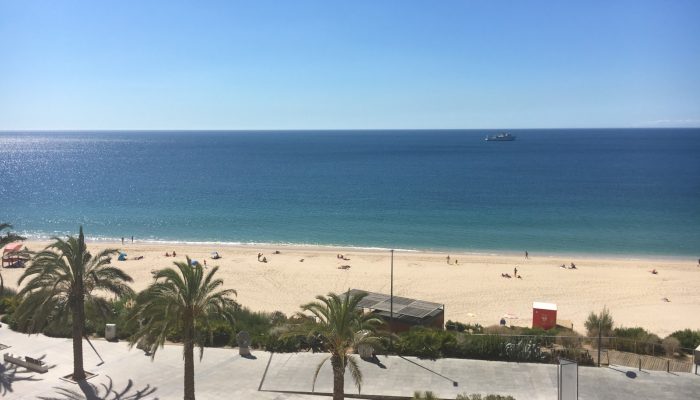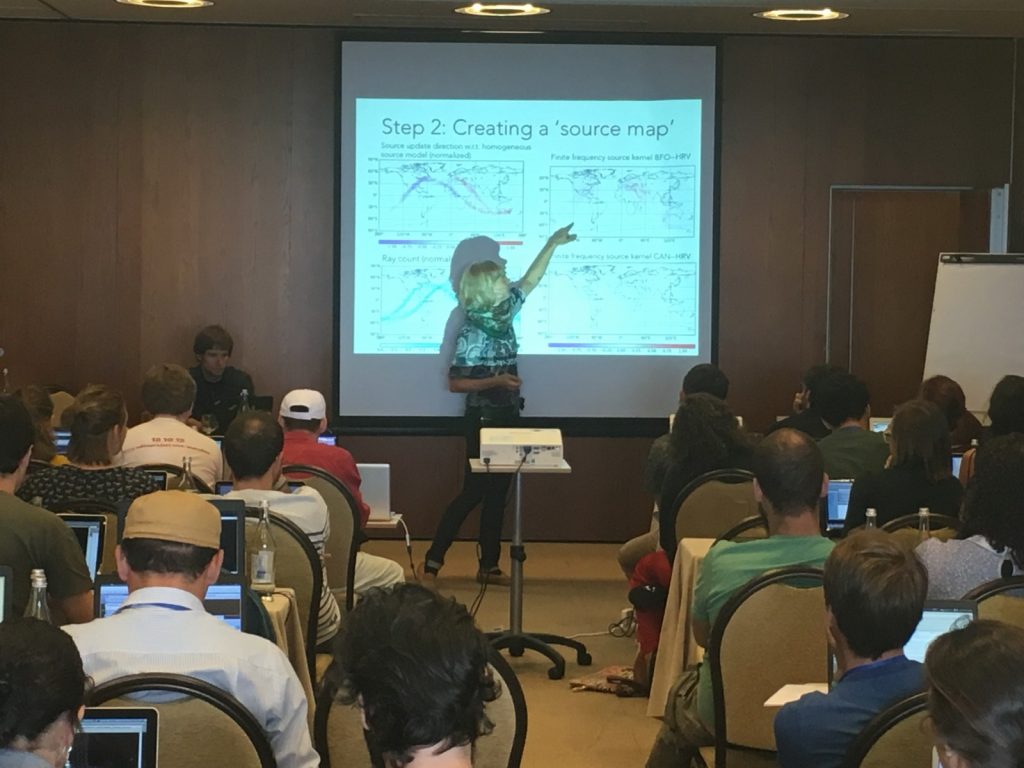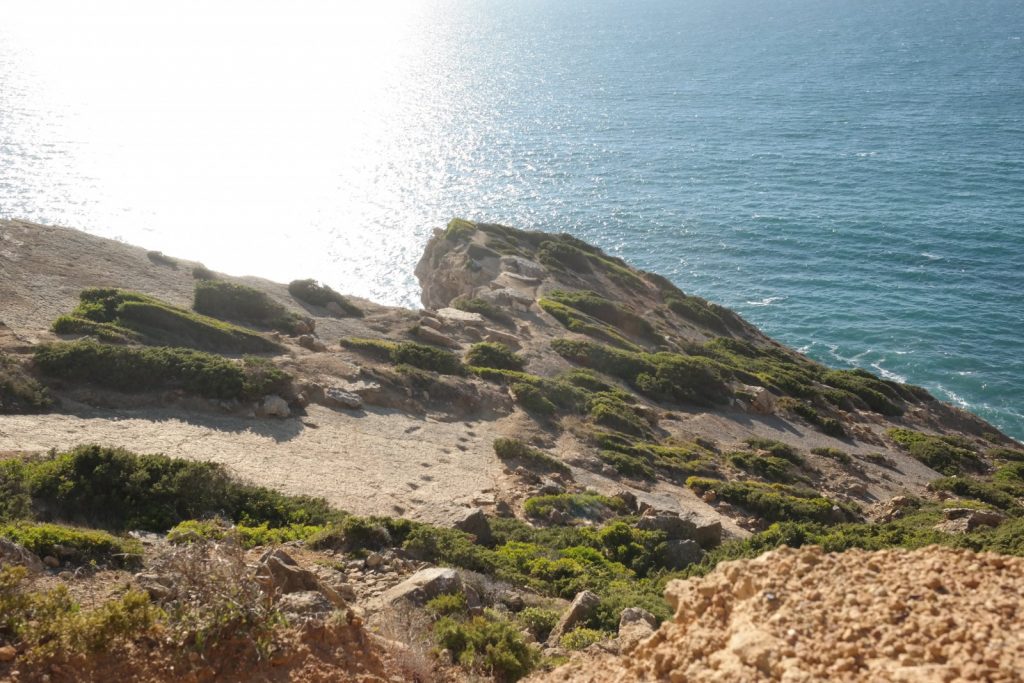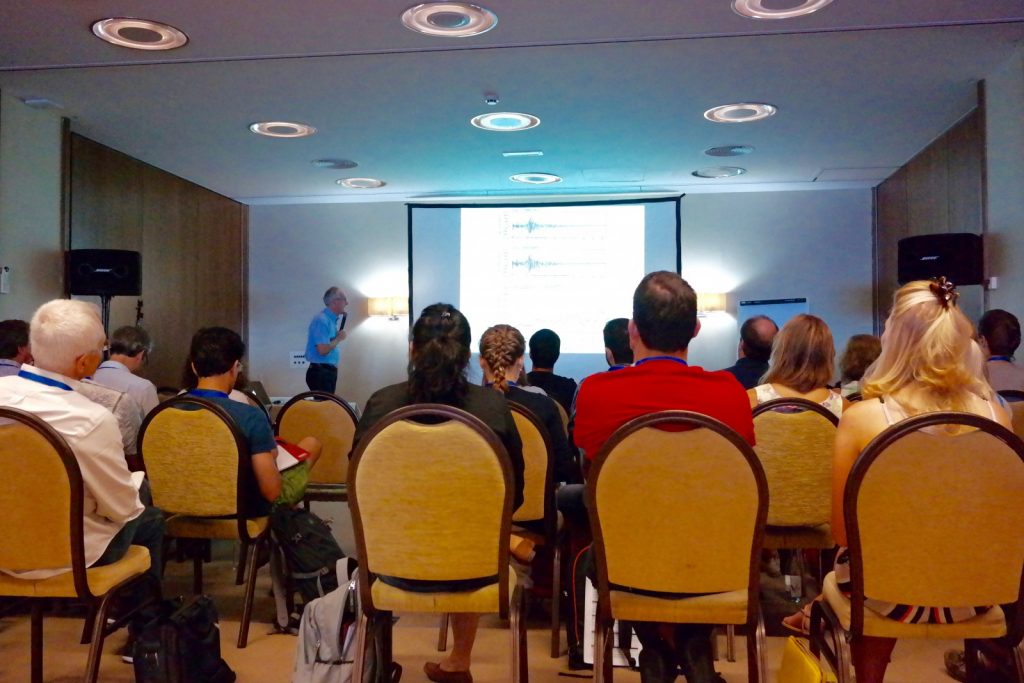
The 2nd TIDES training school!
About 60 ECSeismologists (42% women, 58% men; 67% PhD students, 33% others) gathered in Sesimbra (Portugal) from 19th to 23th Sep 2016 to be trained on seismic noise, from the physics of noise generation to seismic interferometry. Two of us had the opportunity to attend the school and we are happy to share our experiences in the blog!
But first, what is TIDES? Ok, apart from the thing the moon does to Earth? TIDES stands for TIme DEpendent Seismology, an EU COST action that aims to structure the EU seismological community for the development of data-intensive, time-dependent techniques for monitoring Earth active processes (e.g., earthquakes, volcanic eruptions, landslides, glacial earthquakes) as well as oil/gas reservoirs. TIDES is envisioned to connect European laboratories in Academia and Industry with complementary skills and will organise a series of workshops and advanced schools to train the next generation of scientists.
The school in Sesimbra was the second training opportunity organised by the TIDES COST action (the first one was held in Jun 2015 in Bertinoro, Italy). At this year’s school, ECSs were taught on ambient seismic noise generation mechanisms, correlations of scattered wave fields, and their applications to imaging Earth structure. For the occasion, a large group of experts (Erhard Wielandt, Fabrice Ardhuin, Eléonore Stutzmann, Wayne Crawford, Michel Campillo, Céline Hadziioannou, Andreas Fichtner, Andrew Curtis, Roel Snieder, Christoph Sens-Schönfelder, Lapo Boschi, Florent Brenguier, Chris Bean and Thomas Lecocq) filled the schedule with engaging lectures.
Most of the lectures were a combination of theoretical background and current research problems. The opportunity to deepen our knowledge on the subject through their teaching was of course invaluable. But also precious, from an ECS perspective, was the opportunity to listen to scientific discussions between the trainers! Particularly appreciated by the ECSs were the lectures in which the scariest equations of the seismic noise were explained step by step, those in which advice on “how to do” or “how to be a good noise seismologists” were dispensed and those where unanswered, open questions were introduced and discussed.
All ECSeismologists had the opportunity to actively contribute their share of knowledge and excitement to the school by presenting their research with short talks and posters. The training was completed by two hands-on practicals given by the PhD students Laura Ermert and Korbinian Sager.

ECS-rep Laura Ermert talking about noise processing and noise source imaging during on of the two practicals.
The COST Action TIDES is organised in five Working Groups (“Forward problems, HPC applications”, “Seismic tomography, full waveform inversion, uncertainties”, “Applications in the natural environment and industry”, “Workflow integration of data and computing resources”, Seismic interferometry and ambient noise”). During the training school Yann Capdeville, Ana Ferreira, Chris Bean, Heiner Igel and Martin Schimmel led the meetings of the working groups where everyone (ECSs included!) was invited to share new research and collaboration ideas and existing useful information for people working in the different fields.
Believe it or not: The program also contained some live Fado (traditional Portuguese music) and a documentary on the highest wave ever surfed! Another evening passed quickly while Roel Snieder shared his insights – and asked for ours – on the art of being a scientist.
Susana Custodio joined the school on Thursday afternoon to talk about the historical and seismological aspects of the Lisbon earthquake, which occurred in 1755. She then guided a field trip to magnificent cliffs and dinosaur footprints belonging to two different periods of Jurassic and Cretaceous.

Dinosaur footprints in Cretaceous rocks seen by participants during the field trip. [Picture taken by Martha Deen].
The enthusiasm of the organization committee was strong, so that the schedule of the school resulted slightly tight. But as we came here from all over Europe (and even from Australia, Saudi Arabia and Brasil) to learn new and exciting science, this made us feel like we actually reached the goal. Moreover, the beautiful beach and the amazing weather we enjoyed during meals and coffee breaks relieved our fatigues, as well as those of our trainers!
As you could imagine, with a diverse program such as this one, such a training school depends heavily on the engagement and initiative of those preparing it, and we felt very grateful to the people dedicating their time to the organization of this event, in particular Julie Baron (Grant Holder manager), Graça Silveira (local organisation), Andreas Fichtner (scientific organisation), Andrea Morelli (Chair of the COST Action). THANK YOU… and see you next year for the 3rd TIDES training school on Seismic Tomography!
Are you curious about the next training school? You can find more information at http://tides-cost.eu and on the facebook page https://www.facebook.com/cost.tides.20152018/?fref=ts
Your ECS-reps Laura Ermert and Laura Parisi

